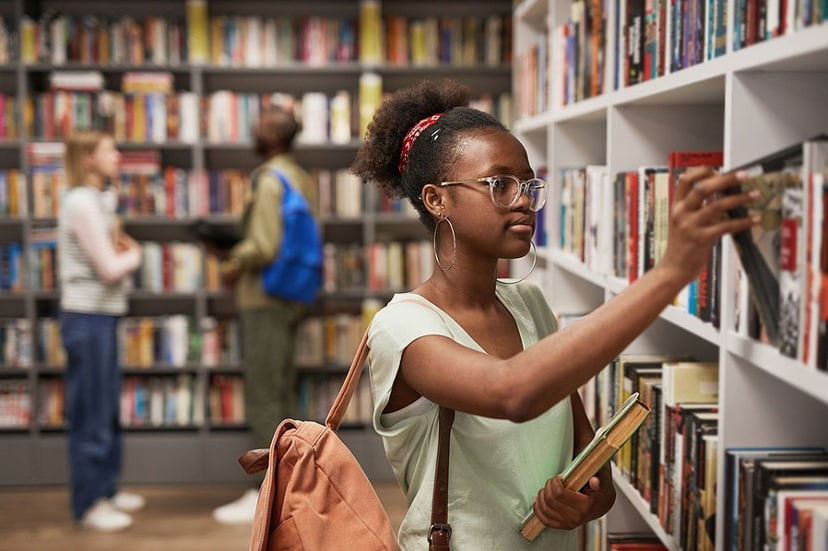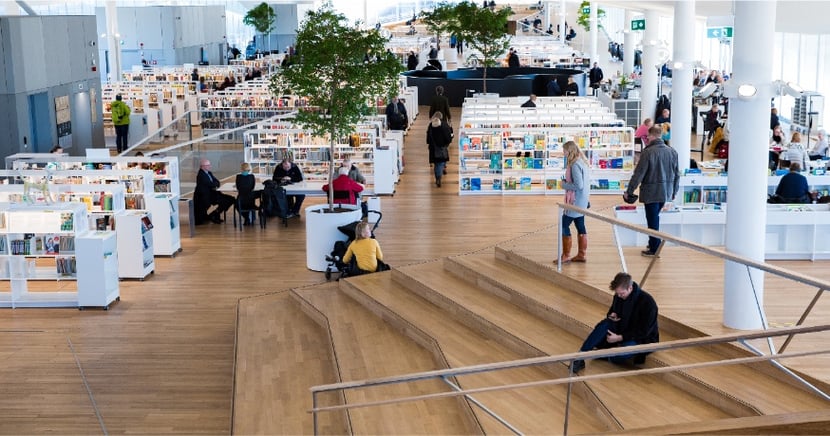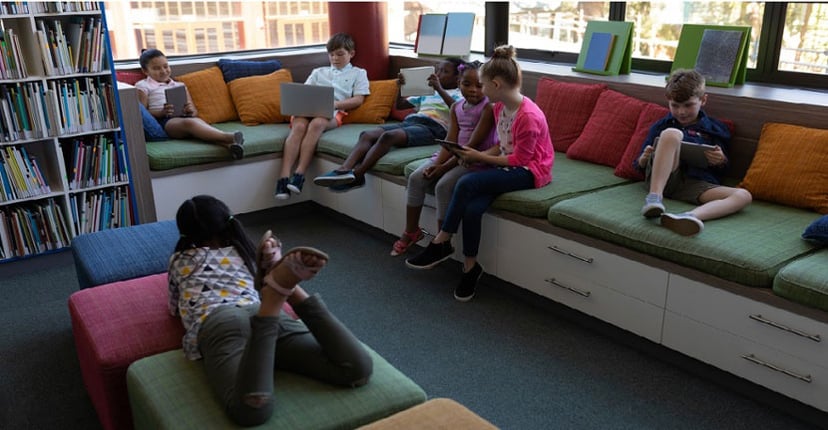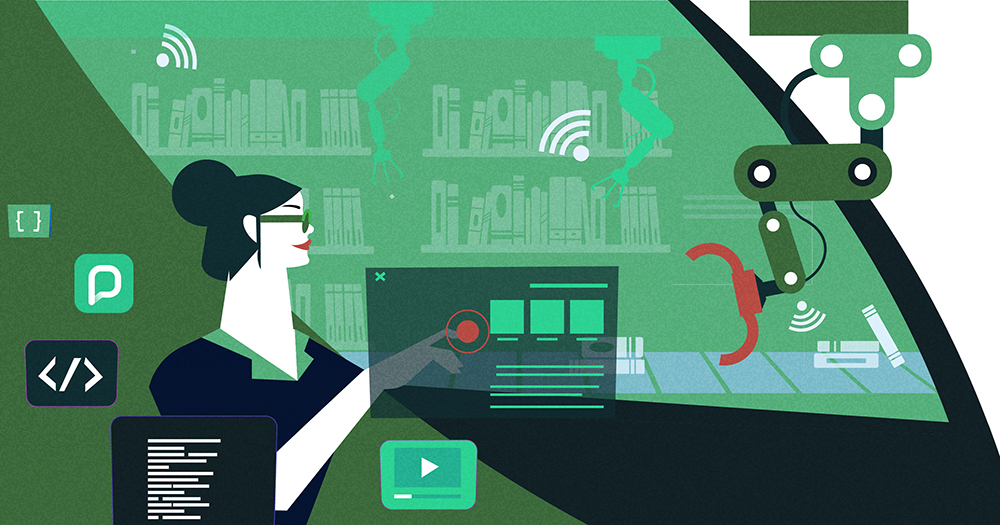As community hubs, public libraries are constantly changing to reflect the needs of their patrons. We’ve written at length about how libraries must evolve to keep up with these changing needs, but we understand that, for the librarian, tackling all these changes can feel overwhelming.
So, we’ve identified a number of small, easy library ideas that will swiftly modernize library spaces without requiring major investments and planning.
While drastic changes can feel daunting, these bite-sized suggestions for modern library spaces, collections and programs empower you to improve distinct aspects of the library one at a time.
Get the ball rolling by reading about some immediate quick fixes that take your patrons’ needs into account and get your library thinking more progressively.
See also:
-
The library of 2030: what to expect from changes to physical design
-
How great library design evolves alongside its community needs
1. Re-evaluate the existing space
When you first enter a public library, the space should feel warm and inviting. Adding a little color, rearranging the seating, creating lounge areas and upgrading old carpets can work wonders in changing the ambiance.
If the carpets do need updating or replacing, this is also a chance to revisit the layout of shelving and seating areas — both simple ways to improve library spaces.
The environment should be spacious, with lots of natural light (where possible) and shelving that is easy to navigate and free of obstacles or cluttered layouts. Innovative library spaces might include a new display that changes weekly, but simply decluttering shelves can help refresh a first impression.

While you’re at it, consider how much floor space is devoted to children and young adult areas compared to adult areas, as well as which areas are saved for storage and staff use.
Knowing where to get help also facilitates a smooth library experience for users. A clearly marked help desk, or materials on display and good signage are easy steps to ensure this. Meanwhile, having wall plugs and USBs handy is important for patrons using mobile phones, tablets and laptops.
There should be areas that allow community members to connect — which could contain white boards, chalkboard walls, and tables for puzzles or games — but also individual contemplative spaces for students to focus on projects or as a workspace for those who can’t work from home.
If budget permits, an investment into ergonomic chairs and standing or adjustable desks will make the space more comfortable.
2. Refresh and diversify collections
As you declutter shelves, it might be a good idea to revisit your collections. Removing books that haven’t been taken out in decades will save space and enable library staff to create more appealing displays, including popular new books and award-winning or up-and-coming authors.
Replacing unwanted books with more diverse collections should also be prioritized. While certain parts of history and points of views have been at the center of our education system in the past, highlighting Indigenous knowledge and marginalized voices is a crucial role that institutions like libraries play in the fight against racism.
3. Reshape library programming
Before you start making broader changes, do some research, and use questionnaires or surveys to get input from real stakeholders and community members. The ideal public-library services for adults in the 21st century might look different depending on the branch. After all, modern libraries are community hubs, not just institutions where users go to borrow books and sit in silence.
Certain branches will have demand for writing groups or technology info sessions, for example, while others will have younger patrons who would prefer art and science demonstrations and room for building with Lego or drawing and brainstorming with whiteboard walls.
4. Reconsider late penalties
Some libraries, such as the Vancouver Public Library, have decided to reduce or eliminate late fees altogether in an effort to remove barriers to library access. While library fines are a deterrent to returning books late and are often considered to be nominal amounts, they can create situations in which poorer patrons, students or children worry about fines so much that they are driven away from borrowing books.
In 2019, the American Library Association adopted a resolution that monetary fines represent social inequity and don’t serve the core mission of the library. This isn’t to say that lost, damaged or stolen books lead to no repercussions, but programs such as “Food for Fines” — where patrons can exchange canned food donations for fine forgiveness — have been implemented by libraries across Canada and the US to address late fees and help the community.
5. Digitize resources
By obtaining digital copies of books or resources, libraries are able to ensure that patrons have easy access to their services whenever and wherever. By providing access to databases and online news or articles, libraries can make a variety of reliable, current and trustworthy information readily available.
Implementing a tool like PressReader for libraries is a simple way to modernize content access overnight and makes quality journalism from a variety of publications from around the world accessible to all patrons.
And decluttering doesn’t need to end with the physical bookshelf. Ensuring that library web pages are welcoming, functional, up to date and easy to navigate offers a crucial first point of contact.
Providing research assistance through online sessions or virtual office hours is also another way to ensure that patrons can navigate the full offerings of the library whether or not they’re accessing the branch in person.
Consider modernizing one small space at a time and prioritizing projects, such as surveying your patrons on new programs or adding new digital resources. There's no need to transform the entire library at once. It takes time to shift from a collection-centric institution to one that puts people at the center.










